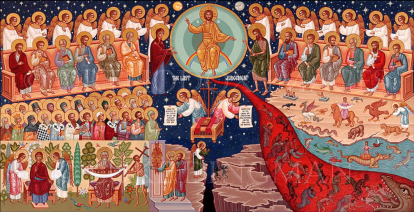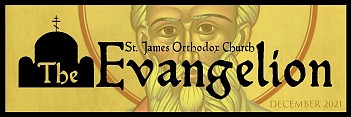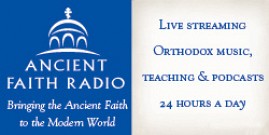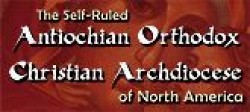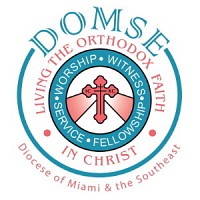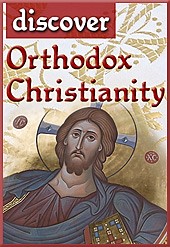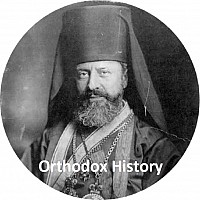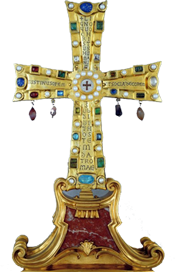Dr. Clark Carlton
Today’s topic is Purgatory. We should avoid the use of the word "hell" in our translations of the Bible and the Fathers and simply transliterate the words Hades and Gehenna from the original Greek texts.
I point out that in the New Testament, Hades and Gehenna have very different meanings. I also note that in the medieval, Latin-speaking West, the terms had more or less become synonymous by the time folks got around to translating ecclesiastical texts into the vernacular. This explains why early translators always used the single word Hell when translating Hades or the Latin, Infernus and Gehenna.
I finish up by noting that this confusion concerning the use of these terms resulted in an oversimplified view of death, which whether intentional or not, tended to downplay the significance of the resurrection and Last Judgment. Because Hades or Infernus came to be thought of as the place of damnation or Gehenna and not simply the abode of the dead.
Any sense of death as a fundamentally unnatural rural state was lost. When people die, they go to their reward whether in Heaven or in Hell. Period. The resurrection and Last Judgment are mere afterthoughts at this point. The stark polarity between the saints in Heaven and the sinners in Hell left medieval churchmen in the West with a problem, however.
From the very beginning, Christians prayed for the dead. But why? The saints in Heaven do not need our prayers, and those in Hell would not benefit by them. The answer to this problem was Purgatory. Recognizing that Christians have always prayed for the dead and also recognizing the obvious fact that not all Christians live saintly lives, Purgatory was conceived as a third place or state in between the fully-blessed and the hopelessly damned. It is for those in Purgatory that the Church prays according to this particular theory.
Now let’s be clear about what Purgatory is and is not. Only baptized Roman Catholics are said to be in Purgatory. Those who die outside the Roman Catholic Church go straight to Hell. They do not pass Go. They do not collect $200. There is no possibility for their salvation. By the way, few Catholics will admit to this nowadays. But this was the unequivocal teaching of the Roman Catholic Church for most of the last millennium.
Now amongst those who have been baptized, there are those who have died without fulfilling certain penances for their sins. Here, Roman theology has traditionally distinguished between the eternal penalty for sin and the temporal penalty. Christ paid the eternal penalty for sin on the Cross. That is why all persons in Purgatory are guaranteed to be saved, eventually.
However, a temporal penalty remains to be paid for sin. This is where penance comes in. By undergoing penance, one pays the temporal penalty. But most Catholics die without fulfilling all the penance due for their sins. That is why they go to Purgatory—to suffer temporal punishment until their debt is paid off, at which point they are allowed to enter Heaven with the rest of the saints.
It’s easy to see how some enterprising clerics, in the late Middle Ages, found a way to turn this scheme into a moneymaker. This is of course the origin of the practice of selling indulgences. For the right price, you can actually buy a certain number of years off your sentence in Purgatory. Offended by the noxious practice of selling indulgences and skeptical of the distinction between eternal and temporal punishment, the Protestant reformers rejected the notion of Purgatory, and rightly so.
Well this brought them back to the polarity I spoke of before. This is the version of things that I grew up with as a Southern Baptist. At the very moment of death, those who are “saved,” that is those who have invited Jesus into their hearts to be their personal Lord and Savior, go immediately to Heaven to be with God. Those who are not “saved,” go directly to Hell where they will burn forever in a fiery pit. No middle ground. No ambiguity. And no prayers for the dead.
There’s also not much reason to believe in the resurrection or Last Judgment, since the real judgment has already taken place. But here is the point I want you to notice. Even though the Reformers rejected the Roman Catholic doctrine of Purgatory, they didn’t question the identification of Hades with Gehenna that gave rise to the issue in the first place.
In the late Middle Ages, there were numerous debates between the Roman Catholics and the Orthodox over the issue of Purgatory. In one such debate Cardinal Bessarion defended the practice with exactly the same argument I outlined above. The Orthodox, however, had trouble understanding it. For one thing, the legalistic framework of owing satisfaction for sins was so foreign to their way of thinking that they had trouble understanding what the Romans were talking about.
Furthermore, they pointed out that in the Scriptures there is no mention of a Purgatorial fire. The only fire is the fire of Gehenna, that is the fire of the Last Judgment. Beyond these points however, the most significant difference between the Orthodox and the Roman Catholics was the fact that when the Orthodox read the word Hades in the Scriptures, (They were after all reading the original Greek.) they actually thought of Hades, the abode of the dead. They did not confuse it with Gehenna, the fiery lot of the damned.
The Orthodox pray for the dead precisely because the Last Judgment has not taken place. I mentioned a few weeks ago that the first use of the word resurrection in the Bible occurs in the Second Book of Maccabees. It is significant that the mention of the resurrection in this passage is tied directly to the offering of prayer for the dead. Judas Maccabeus offered sacrifices for his slain men on account of the resurrection and the Last Judgment.
We see something similar in the New Testament. When Paul learns of the death of his friend Onesimus, he says, “May the Lord grant him to find mercy from the Lord on that day.” And of course in the Liturgy, we ask for a good answer before the fearful judgment seat of Christ. Both the New Testament and the Liturgy of the Church are focused clearly on the coming day of the Lord.
Now to fully understand the significance of all of this, we’re going to need to look at the nature of the Last Judgment and how it relates to death. Let us not forget that Christ has conquered death. So in our intercessory prayers, let’s not forget those who have already died. All who await the judgment, whether alive or dead, need our prayers—just as we need the prayers of our brothers and sisters.
We've been talking about the difference between Hades, the abode of the dead, and Gehenna, the state of final damnation following the Last Judgment.
The first thing I want to point out is that the Second Coming of our Lord is the Last Judgment. And the Last Judgment is nothing other than the appearance of our Lord in all His glory, that is, we cannot separate the appearance of Christ from His judgment. For the Orthodox, the fire of Gehenna is nothing other than the presence or the glory of Christ. That is what St. Paul says in 2nd Thessalonians Chapter 1 when he speaks of the damned being punished from the presence of Christ and the glory of his power.
Now as a Southern Baptist, I would have interpreted that verse as meaning that sinners are cast away from the presence of Christ, into a fiery pit, where Christ cannot be because He cannot be near sin. However, the Greek word for “from,” apo, can also mean “from, as from a source.” Indeed, if you look at the entire context of this passage, you will see this is the most likely meaning of Verse 9. When Christ returns in glory, as our Lord taught us, and as we confess every Sunday in the Creed, He will, as St. Paul says, “be all in all.” There will be no place where God isn’t. It is therefore the very presence of Christ, which will either be blessedness for the saints or condemnation for sinners.
Now I’m well aware that there are passages in the Scriptures that depict damnation as a casting away, such as the Parable of the Sheep and the Goats. But I would point out here that the Scriptures employ many metaphors for the Judgment, just as it employs many different metaphors for salvation. There is however a hierarchy among these metaphors. Some are more primary than others. On the whole, the Church Fathers understand the Last Judgment and final damnation of the wicked as suffering from the presence of the Lord and not as being cast away from His presence. As St. Isaac the Syrian famously said, “Gehenna is the love of God,” that is, it is the loving presence of God to those who cannot or will not respond to His love. And of course, Dostoevsky picked up on this theme in The Brothers Karamazov.
The second thing that I want to point out about the Second Coming and Last Judgment is that it is the final consummation of the Incarnation, and therefore, the consummation of creation itself. You see, for us, the Incarnation was not Plan B. God did not suddenly look down from Heaven one day and notice that mankind had fallen into sin, and then decide “Well, I’d better send my Son to fix all this.” On the contrary, the Fathers teach us that the world was created with the Incarnation in view. That means that the Incarnation did not begin with the Annunciation to the Virgin, but at the very moment that God began to speak the cosmos into existence. The cosmos was created by the Word and for the Word. That is what the Scripture means when it says that Christ was the firstborn of all creation.
The Second Coming of Christ, then, is the consummation of God’s pre-eternal plan for the entire cosmos. It is the final revelation of God, not only to but within His creation. Now if we take this big picture view of things, from the first moment of Creation to the Second Coming, we can begin to understand what death is and how it relates to the Final Judgment. The fall of mankind represents our failure to live up to our priestly and kingly vocation, as living beings created in the image of God. St. Basil says that man is the only creature with orders to become like God.
Death was the inevitable result of that failure. Now notice a couple of things here. First, God did not say that He would kill Adam and Eve if they ate the forbidden fruit, but that they would surely die. In other words, death was not presented in the Bible as a punishment but as a consequence. Second, Adam and Eve did not in fact die the day they ate of the tree, at least not physically. This tells us that physical death is in fact the consequence of the spiritual death, the break of the communion with God that Adam and Eve imposed upon themselves with their disobedience.
We must understand, therefore, that death is a continuum of sorts that embraces both the lack of communion with God and the disillusion of the psychosomatic unity of man. The latter follows from the former. Because man was created in the image of God, that is in the image of Christ, death is a profoundly unnatural state. We as Orthodox Christians do not believe that a disembodied soul is a complete human being. That is why the Scriptures call death an enemy, in fact, the last enemy to be overcome. That is also why we insist on the centrality of the physical resurrection.
At the same time however that we speak of death as an enemy and of Christ’s Resurrection as a victory over death and Hades, the Fathers also look at death as a gift, of sorts, of God’s providence, that is to say, God allows death as a means to bring us to repentance. Death mocks us. It mocks the fortunes we work so hard to accumulate. It mocks the buildings we build and upon which we inscribe our names. It even mocks the human relationships that we build as we watch our loved ones lowered into the earth. In short, death shows us the utter futility of life lived out of communion with God, the only source of light and life for mankind.
When our Lord assumed our human nature from the Virgin, as He had intended from the very beginning, He assumed not only the best and highest aspects of our nature, created in His image, He also assumed all of the consequences of our fall, including death itself. Christ’s descent into Hades represents this kenotic assumption of the lowest depths of the human experience. Consequently, His Resurrection from the tomb on the third day represents the complete and utter victory over sin and death and the restoration of humanity to its pre-eternal calling. And yet, people still die.
How then can we affirm with St. John Chrysostom at the Paschal Liturgy that not one dead remains in the tomb, when graveyards all over the world are full? Well to understand this, we have to take into consideration what Fr. John Meyendorff liked to call “the Time Factor.” God, of course, exists outside of time, but creation exists within time. Christ is the firstborn of all creation; the last Adam who was before the first Adam. Yet, He was born at a specific point in human history. He lived on Earth for 33 years or so and was crucified at a specific time on a specific day in a specific place.
Now, you and I also live within time, but more precisely, the time between our Lord’s Ascension into Heaven and His Second Coming. And yet, to the extent that we are united with Christ in Baptism and live according to His Spirit, we also live, at the same time, outside of time. We experience this especially in the sacramental life of the Church, where not only are the events of the past are made present to us but also the consummation of the ages.
That is why in the Liturgy, just after the Words of Institution and before the Consecration of the Gifts, the celebrant says “Remembering all that has come to pass for us, the Cross, the tomb, the Resurrection on the third day, the Ascension into Heaven, the sitting at the right hand, and the Second and Glorious Coming.”
Do you see? We actually remember the Second Coming. Now that context, what theologians like to call “eschatological time,” is the context in which we must try to understand the fate of the dead prior to the general resurrection. To the extent that a person is united with Christ and is able to bear His presence here and now, then death cannot possibly separate him or her from Christ, which of course is precisely what St. Paul confirms. And yet, we must also stress that this state, which we sometimes refer to as blessed repose, is not the state of final blessedness. That state will only be attained at the resurrection, because human beings were created as psychosomatic unities, not as disembodied spirits.
But what of those who are not united with Christ in this life, who die in a state in which their souls are unprepared to abide in the presence of the Lord of Glory? Well, this is where the Church still uses the term Hades, not Gehenna mind you, but Hades. It is a state of sorrowful anticipation of the Last Judgment. But some will ask, “I thought Christ emptied Hades?” Well, He did, when He raises all people from the dead. Remember, we have to think in terms of “eschatological time” here.
Now several other questions arise at this point. Why do we pray for the salvation of Christian souls? Aren’t Christians saved already? Are we allowed to pray for the non-Orthodox? Is there a chance that someone in Hades might be saved before the Last Judgment? Well, I’ll get to all of these questions next week when I wrap up the series on Hades and Gehenna. Until then, let us remind ourselves that this life is the arena appointed for our salvation and let us make the most of it!
